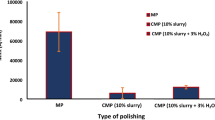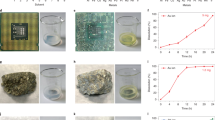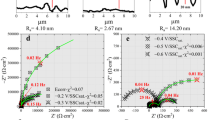Abstract
A Remarkable phenomenon is shown by metallic titanium when rubbed against many hard surfaces. If a piece of the metal with a rounded end, of radius of curvature about 1 mm., is pressed firmly on to a hard surface and drawn across it, the metal is left behind in the form of a silvery smear. Smears are obtained with greater difficulty on some substances than on others, but only one crystalline material has been found on which no smear is produced (see accompanying table). The titanium metal may be removed by treatment with hot concentrated hydrochloric or sulphuric acids for about half an hour, or by treatment with cold commercial hydrofluoric acid for a few seconds. Some surfaces which were originally smooth and shiny are seen to have lost their polish after the titanium has been dissolved away. In this way, for example, it is possible to remove the polished surface of glass by rubbing with titanium and then dissolving the metallic smear in hydrochloric acid. The table gives a summary of the results obtained on a number of crystalline materials and on glass.
This is a preview of subscription content, access via your institution
Access options
Subscribe to this journal
Receive 51 print issues and online access
$199.00 per year
only $3.90 per issue
Buy this article
- Purchase on SpringerLink
- Instant access to full article PDF
Prices may be subject to local taxes which are calculated during checkout
Similar content being viewed by others
References
Bowden, F. P., Moore, A. J. W., and Tabor, D.,J. Appl. Physics, 14, 80 (1943.)
Author information
Authors and Affiliations
Rights and permissions
About this article
Cite this article
WOOSTER, W., MACDONALD, G. Smears of Titanium Metal. Nature 160, 260 (1947). https://doi.org/10.1038/160260a0
Issue date:
DOI: https://doi.org/10.1038/160260a0



